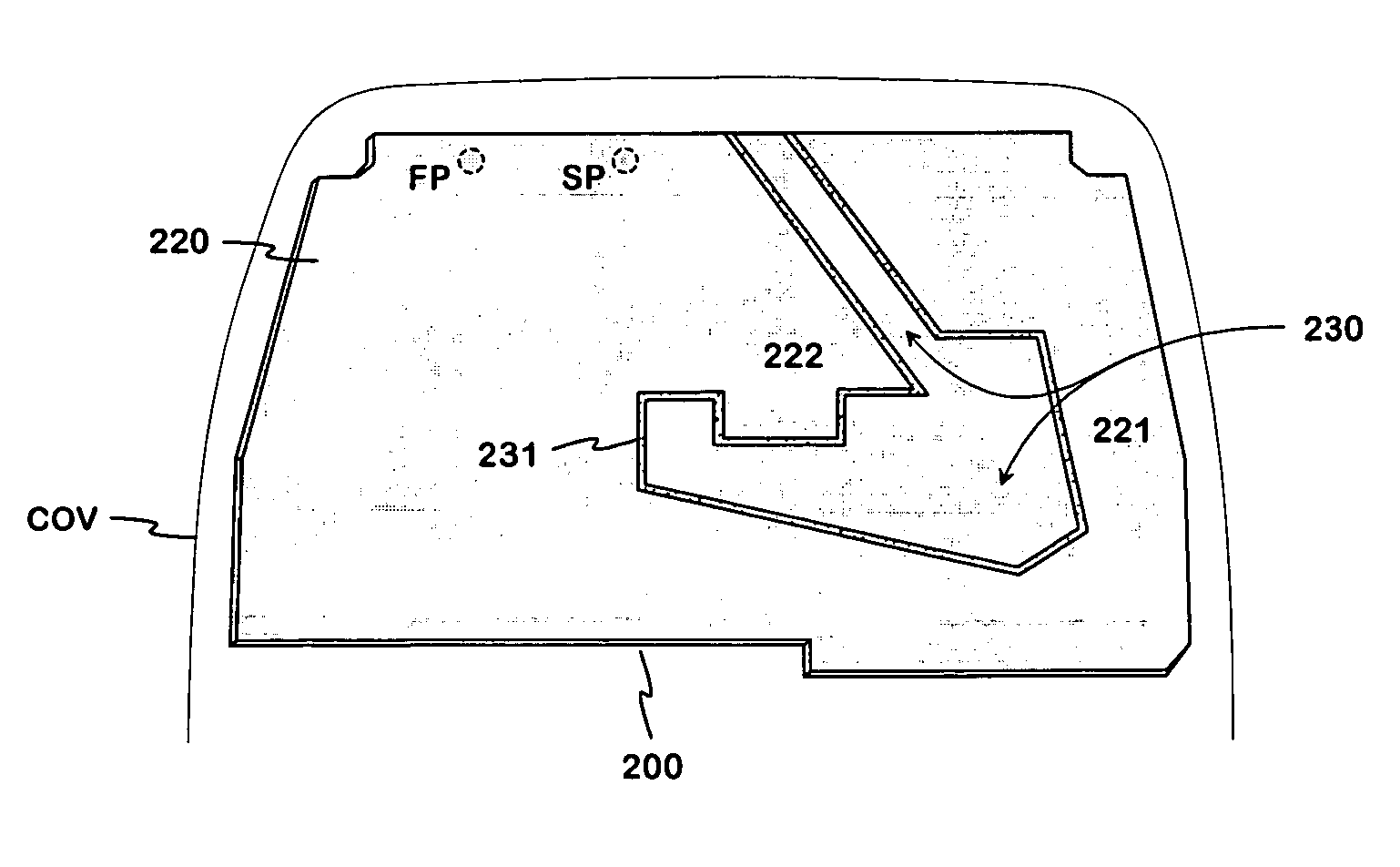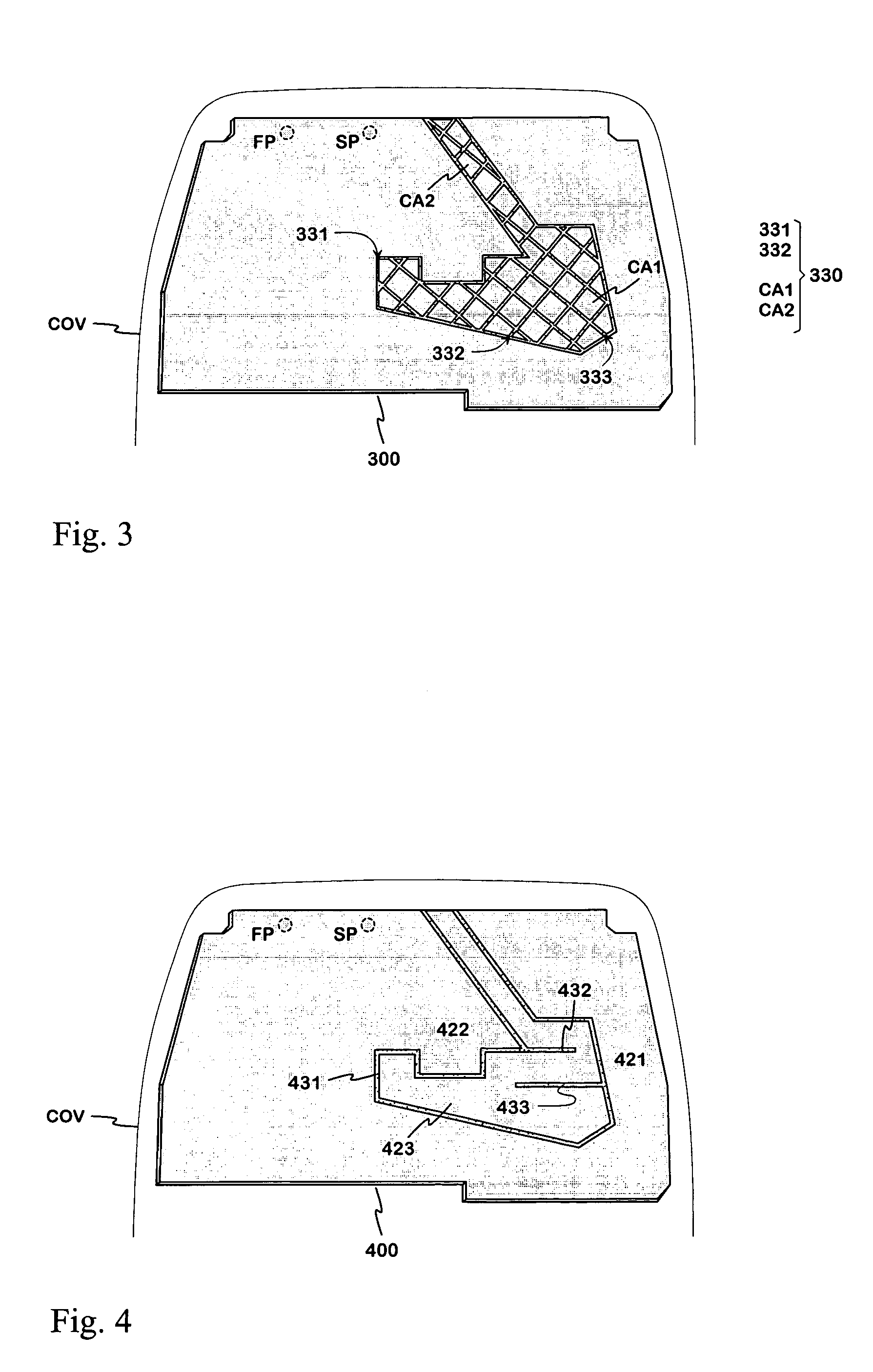Antenna element and a method for manufacturing the same
a technology of foil elements and elements, applied in the direction of radiating elements, substantially flat resonant elements, resonant antennas, etc., can solve the problems of significant production cost, difficulty in making the shape of foil elements remain exactly right during fastening, and inconvenient use, so as to avoid waste of resources and reduce manufacturing costs. , the effect of wide area
- Summary
- Abstract
- Description
- Claims
- Application Information
AI Technical Summary
Benefits of technology
Problems solved by technology
Method used
Image
Examples
Embodiment Construction
[0019]FIG. 2 shows an example of a radiating antenna element according to the invention. The antenna element 200 comprises a dielectric substrate and a radiating plane 220 on its surface, divided into two conductor branches, like in the element of FIG. 1. The elements differ from each other with respect to the area separating the radiating conductor branches. In FIG. 1, the conductive coating has been entirely removed from that intermediate area 130. In FIG. 2 again, the original conductive coating is almost entirely left on the corresponding intermediate area 230. The conductive coating has been only narrowly removed at the border line of the intermediate area. The line-like non-conductive area thus created is called a “groove”. So, the intermediate area 230 is confined by a border groove 231. The conductor area remaining inside the border groove, which is slightly smaller than the intermediate area 230, forms in the complete product, in principle, together with the ground plane an...
PUM
 Login to View More
Login to View More Abstract
Description
Claims
Application Information
 Login to View More
Login to View More - R&D
- Intellectual Property
- Life Sciences
- Materials
- Tech Scout
- Unparalleled Data Quality
- Higher Quality Content
- 60% Fewer Hallucinations
Browse by: Latest US Patents, China's latest patents, Technical Efficacy Thesaurus, Application Domain, Technology Topic, Popular Technical Reports.
© 2025 PatSnap. All rights reserved.Legal|Privacy policy|Modern Slavery Act Transparency Statement|Sitemap|About US| Contact US: help@patsnap.com



